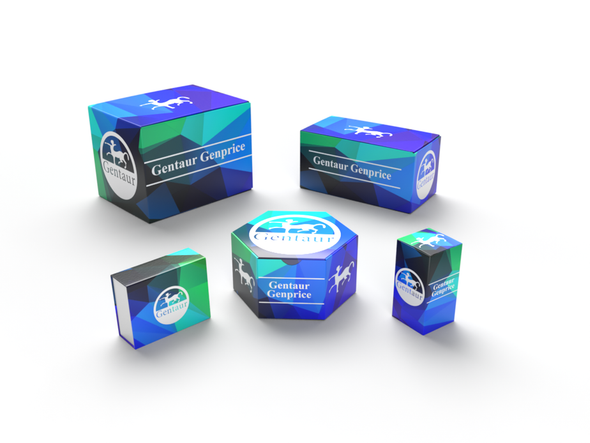Description
ORAI3 Antibody | 4215 | Gentaur UK, US & Europe Distribution
Host: Rabbit
Reactivity: Human, Mouse
Homology: N/A
Immunogen: ORAI3 antibody was raised against a 19 amino acid synthetic peptide from near the carboxy terminus of human ORAI3.
The immunogen is located within amino acids 200 - 250 of ORAI3.
Research Area: Immunology
Tested Application: E, WB, ICC, IF
Application: ORAI3 antibody can be used for detection of ORAI3 by Western blot at 2 - 4 μg/mL. Antibody can also be used for immunocytochemistry starting at 5 μg/mL. For immunofluorescence start at 10 μg/mL.
Antibody validated: Western Blot in mouse samples; Immunocytochemistry in mouse samples and Immunofluorescence in mouse samples. All other applications and species not yet tested.
Specificiy: ORAI3 antibody is predicted to have no cross-reactivity to ORAI1 or ORAI2.
Positive Control 1: Cat. No. 1288 - A20 Cell Lysate
Positive Control 2: Cat. No. 17-208 - A-20 Cell Slide
Positive Control 3: N/A
Positive Control 4: N/A
Positive Control 5: N/A
Positive Control 6: N/A
Molecular Weight: Predicted: 32 kDa
Observed: 34 kDa
Validation: N/A
Isoform: N/A
Purification: ORAI3 Antibody is affinity chromatography purified via peptide column.
Clonality: Polyclonal
Clone: N/A
Isotype: IgG
Conjugate: Unconjugated
Physical State: Liquid
Buffer: ORAI3 Antibody is supplied in PBS containing 0.02% sodium azide.
Concentration: 1 mg/mL
Storage Condition: ORAI3 antibody can be stored at 4˚C for three months and -20˚C, stable for up to one year. As with all antibodies care should be taken to avoid repeated freeze thaw cycles. Antibodies should not be exposed to prolonged high temperatures.
Alternate Name: ORAI3 Antibody: TMEM142C, TMEM142C, Protein orai-3, Transmembrane protein 142C
User Note: Optimal dilutions for each application to be determined by the researcher.
BACKGROUND: ORAI3 Antibody: Antigen stimulation of immune cells triggers Ca++ entry through Ca++ release-activated Ca++ (CRAC) channels. ORAI3 is one of two mammalian homologs to ORAI1, a recently identified four-transmembrane spanning protein that is an essential component of CRAC. All three homologs have been shown to function as Ca++ plasma membrane channels gated through interactions with STIM1, the store-activated endoplasmic reticulum Ca++ sensor. However, ORAI3 channels failed to produce detectable Ca++ selective currents in cells co-transfected with ORAI3 and STIM1, indicating that ORAI3 channels undergo a lesser degree of depotentiation than ORAI1 or ORAI2. Na+ currents through ORAI1, 2 and 3 channels were equally inhibited by extracellular Ca++, indicating that each have similar affinities for Ca++ within the selectivity filter.






